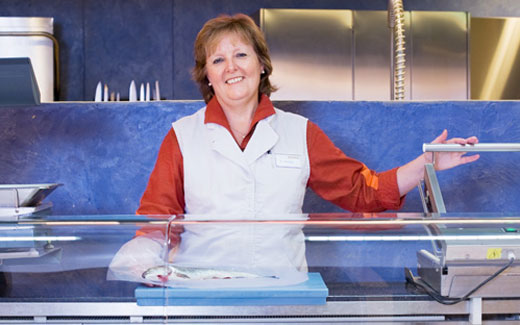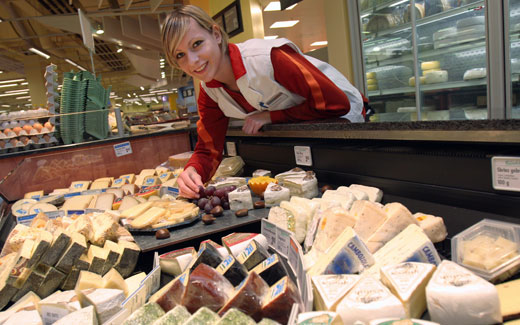




Workforce and Staff Movements
Within the Migros Group, Cooperative Retailing, which accounted for about 68% of the total workforce in 2010, continues to play a major identifying role.
Workforce
Almost 20% of the people employed in the Swiss retail sector, whose 318'000 workers make it the second largest branch in the private sector, work in the Migros Cooperative Retailing division. Based on the number of people they employ, the other business units are also very important to the national economy. Migros Industry, for instance, employs around 30% of the people who work in the Swiss food industry. About 20% of all employees in the Swiss travel industry work in the Travel business unit.
Migros Group workforce
Although long-term employment trends in Swiss retailing show a decline in the number of workers, and a fall in job vacancies, Migros remained at a consistently high level in 2010, in terms of both employee numbers (83'616 persons) and of full-time positions (61'615 persons). Looking back over several years, comparisons show that despite recurrent economic downturns and upheavals in the domestic and global economies, consolidated employment growth over the period 2006 to 2010 was over 5%. For Migros, this points to a clear and sustained growth in employment trends.
Chart Workforce
Workforce by strategic business units
The sheer diversity of economic sectors, branches and markets, where the staff are employed in many different functions, activities and professions, is manifest in the organisation of the Migros Group into five strategic business units (SBU) – Cooperative Retailing, Commerce, Industry & Wholesaling, Financial Services and Travel, to each of which one or more business units is allocated – and into other enterprises; as well as numerous foundations these include principally the shared services with the national logistics centres, Migros Distribution Centre Suhr (logistics services centre for food) and Migros Distribution Centre Neuendorf (logistics services centre for non-foods, textiles and frozen products). This diversity shows the strength of the Migros Group in terms of corporate and personnel policy, but also represents a permanent challenge for it.
Chart Workforce by strategic business units
Staff movements
Hiring rate
For the period 2006 to 2010, Migros achieved consolidated employment growth of 5%. That is due firstly to the high hiring rates resulting from continuous corporate growth, and secondly to a low fluctuation rate, both net and gross.
Chart Hiring rate
Fluctuation rate
Net fluctuation, i.e. departures, where employment was terminated by the employees concerned, amounted to 5.52% in 2010, only a slight change on the previous year’s figure of 5.41%. Even if one considers that employees’ decision to change jobs is largely in line with cyclical trends, and that in the boom years of 2007 and 2008 the net fluctuation rate was just over 7%, the turnover rate at Migros – in individual years as well as in average terms over several years – is well below the fluctuation rate of 8% for Switzerland as a whole.
Chart Fluctuation rate
Hiring and fluctuation rates compared
The comparison between the average hiring rate and the average gross fluctuation rate for the past five years shows that departures were more than offset by appointments, and that the Migros Group has continued to create jobs. As well as voluntary departures, the gross fluctuation rate also takes retirements, deaths, job changes within the Migros Group, invalidity and performance-, conduct- or organisation-related terminations into consideration, the last of which only accounts for about 0.5%.